I’m a self-professed tire geek. I have tire-size calculator websites bookmarked. I love the smell of new rubber. There’s just something about tires I’ve always been fascinated with.
Admittedly, I was stoked to attend the Treadwell Experience 2024, put on by Discount Tire. Here, we’d get a chance to see how Discount Tire, the nation’s largest tire retailer, tests the tires they sell, collects data on them, and even how they recommend tires.
Texas’ Treadwell Research Park
The event took place at Treadwell Research Park, a privately owned 900-acre swath of land in Pearsall, Texas, an hour south of San Antonio. There, Discount Tire tests the tires they sell. Yes, all of them.
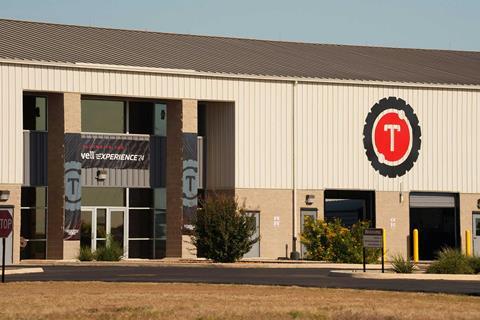
From the cheapest to the priciest, they go through the company’s scrutiny. Those ratings can then be found through the company’s Treadwell tire recommendation tool on its website.
Originally owned by Cooper Tires, the track consists of on- and off-road test stations and surfaces. This includes a 1.9-mile oval for a litany of tests, and dry and wet vehicle dynamic testing areas.
For off-road evaluation, there’s a mud-traction area and a trail handling section. Additionally, there are specific hill climbs, a boulder crawl, a rock garden, a silt road course, gravel bins, and a cut-and-chip rock road. All these tests let Discount Tire recommend the right tires to its customers.
This testing facility has also gotten the attention of tire manufacturers, too. In fact, some even rent buildings on the campus to do their own independent tire testing, which speaks to the facility’s resources.
What is Treadwell?
Discount Tire, based in Scottsdale, Arizona, doesn’t manufacture tires; they’re solely a retailer. Treadwell is the company’s proprietary tire recommendation tool which gets over 1 million points of data a year and makes over 50 million recommendations annually.
The company states this is designed for “empowering consumers to find the best tires for their driving needs based on where they drive, what they drive, and how they drive.” This data is also shared with tire manufacturers in hopes of making better tires for the driving public.
As much as I’ve frequented DiscountTire.com, admittedly, I’d never used the Treadwell tire recommendation tool because I usually know what I’m after. But after arriving at Treadwell Research Park, I gave the software a go. Simply enter your vehicle’s year, make, and model; your ZIP code; and 1 of 3 driving styles.

The system will provide recommendations based on the company’s extensive tire testing. You may wonder why location is important. It’s because different road surfaces and climates affect a tire’s life. After all, tires will perform and wear differently if you live in St. Augustine, Florida versus St. Paul, Minnesota.
If you’re skeptical like me, I figured—it’s probably spitting out the most expensive rubber. However, that’s not necessarily the case. The company had a resounding ethos of putting consumers into the right tires, not the ones that are the most expensive. So how are they doing this?
The Discount Tire folks, along with Smithers, a third-party testing company, helped to show us what goes into some of the tire testing Discount Tire does. I started out, where else, but the off-road section.
Off-Road Tire Testing
We were first given a lap around the area in Jeep Wranglers riding on 37x12.50 Toyo and Nitto tires, along with information on each testing area, then we were allowed to tackle some of the tests as drivers.
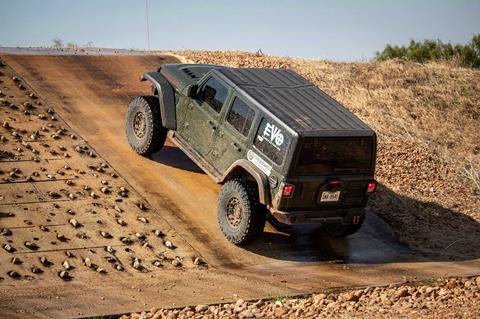
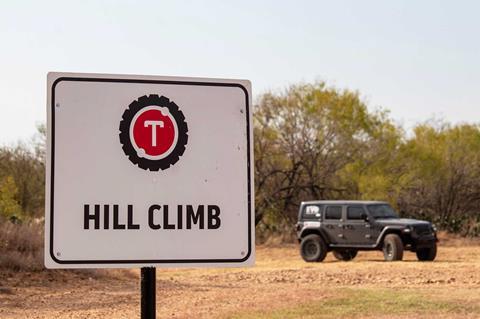
The first stop was the hill climb. Here, a 30° cement slab with various surfaces receive a constant flow of water to slick things up. First, you approach the slab in 2WD to see if you can ascend the slippery slope. If not, you engage 4WD High.
If that’s enough to start the ascent, you stop mid-hill and see if you can start again. Neither tire could make it in 2WD, but both could in 4WD High, and both could also start mid-hill. These are also high-end tires with lots of engineering, but apparently, not all tires can perform like this. But this is just one test for off-road rubber.
All the other obstacles are located along a winding dirt trail used to evaluate off-road handling. You eventually come upon a gnarly boulder crawl, which we weren’t able to drive, but was demonstrated by a custom LS-swapped Jeep Wrangler riding on 40” tires.
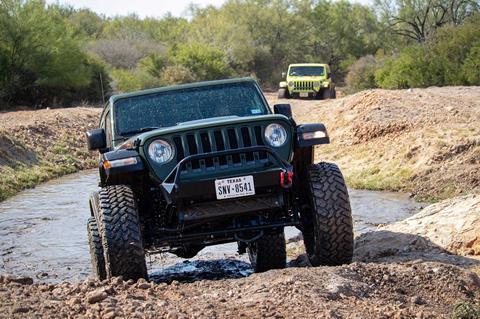
The wandering test trail section then leads to a rock garden with a host of small rocks all covered by a foot or two of water followed by a climb out of it. There’s also a silt bed to check sand performance.
These scenarios let test drivers subjectively evaluate how a tire will perform in a variety of situations. At this point, however, the off-road data hasn’t been put into Treadwell’s algorithm, but it will in the near future. Right now, all Discount Tire’s Treadwell testing is evaluated on pavement.
Wet and Dry Braking Tests
After visiting the off-road track, I headed to the facility’s 1.9-mile paved oval track. Here, tire testers evaluate multiple factors, some mechanically measured, some subjective, all of which get fed into the Treadwell evaluation system.
The two measured tests are wet and dry braking. Here, a vehicle (an all-wheel drive BMW 3 Series in our case) reaches 70 MPH, and enters a wet (or dry) braking zone. The driver slams on the brakes, and the stopping distances are measured electronically.
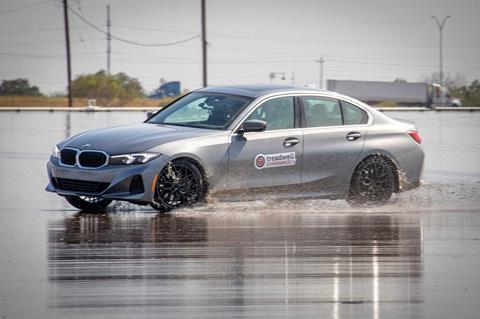
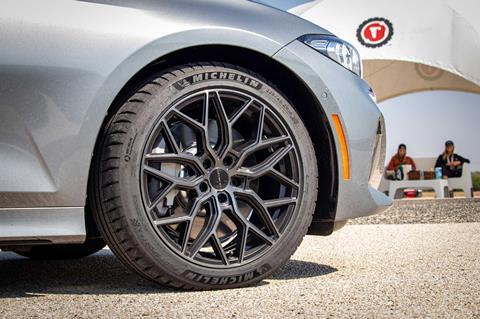
We did this in identical cars with different tires. One had Michelin Pilot Sport 4S tires, the other Goodyear Assurance all-weather rubber. And yes, the differences were very apparent.
Next were the subjective tests. This included emergency handling, turn-in on a banked oval, and a variety of noise level tests. The noise tests let us listen to the tires on different pavement types, over poor/broken pavement, and more.
After starting in the BMW with the high-performance tires, then moving to the version with the all-weather tires, the differences couldn’t have been more noticeable in these tests.
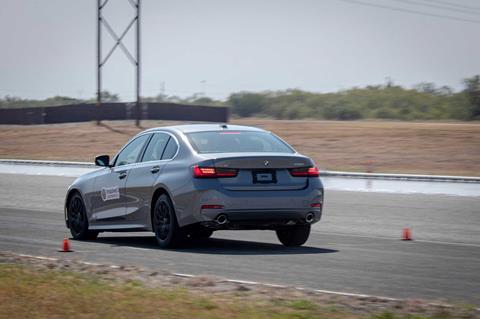
The high-performance tires produced better braking, less understeer, and better turn-in results. However, the all-weather tires, which were 3 Peak Mountain Snowflake (3PMS) rated, would undoubtedly be better in snow.
It was really interesting to see these evaluations and what goes into Discount Tire’s testing, as well as the marked differences between tire types, even on the same vehicle.
The Dry Vehicle Dynamics Area
Next stop? The first of two vehicle dynamics areas (VDA), this one was for dry handling. Here, we had the opportunity to run Treadwell’s 500 ft x 700 ft test track. It started out with a tight autocross section strewn with safety cones leading to a twisty track section.
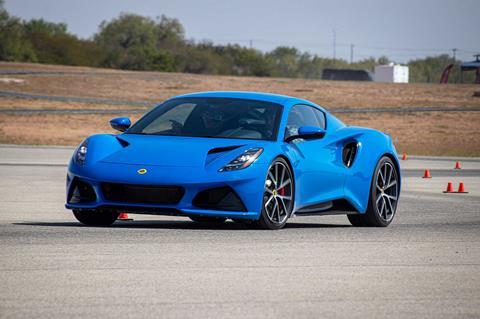
Our chariot? A new 2025 Lotus Emira with a 2.0-liter turbocharged engine making 360 horsepower.
This $100,000 sports car had knife-edge handling and was like a street-legal racecar offering cat-like reflexes and exotic car sounds. It was a great tool to experience the dry VDA. Despite it being an absolute blast on a closed course, it gave us an idea of how the test track can be used to evaluate tires, whether by Discount Tire or a tire manufacturer.
The Wet Vehicle Dynamics Area
The last place we visited was the wet VDA. This is an 800 ft x 800 ft pad with a thin sheet of water constant cascading over it. Cones are set up and you’re able to subjectively evaluate a tire’s wet traction.
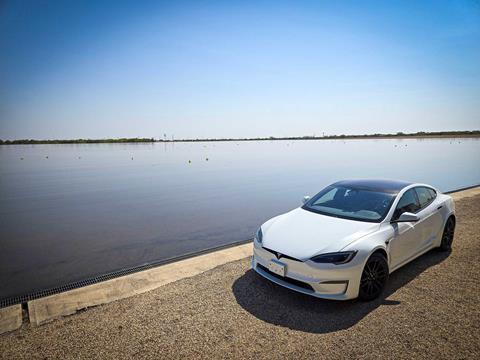
Rear-drive BMW 3 Series sedans were the weapon of choice. Like the oval track, we were on a performance Michelin tire and an all-weather Goodyear tire, and again the differences were night and day, with each having a specific use-case.
This course really allowed you to find a tire’s razor’s edge just before spinning out. It was an excellent way to showcase just how much wet grip a tire is able to afford—and what a difference a different type of tire can provide in the way of handling.
This was also my favorite station as you could attempt to drift the cars around the corners. In my case, I have a long way to go before being cast in the next Tokyo Drift film.
While the public doesn’t get a chance to test out tires, Discount Tire’s Treadwell provides the data and info they obtain from their tire testing to help buyers get that just-right tire for their driving style, performance level, and location—not to mention budget.
Tire Info From Customer Data
I was recently at my local Discount Tire in Tigard, Oregon having a set of BFGoodrich g-Force Comp 2 A/S Plus tires installed on my go-fast Subaru Forester XT. However, before the tire techs dismounted the old all-season rubber, I noticed them scanning the tires’ surfaces.
I thought they were looking for a tire pressure monitoring sensor, which the vehicle doesn’t have. It turns out they were measuring the tire depth of the old, worn tires. I found this kind of interesting, but it’s standard practice. Why?
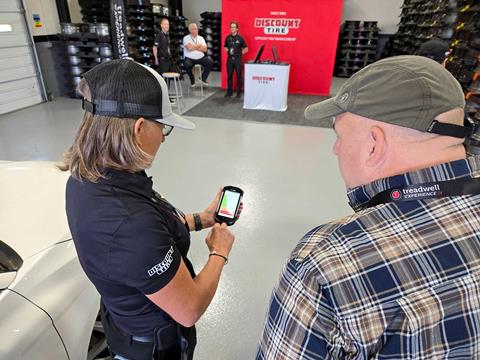
When we were learning about Treadwell and Discount Tire’s testing and information-gathering techniques, it was explained how the company measures tread depth on worn tires to gauge the rolling stock’s life expectancy and wear.
This is all fed into the Treadwell data sets, and with 1,200 stores nationwide providing data, Discount Tire ends up with lots of info. The company believes “shared date equals empowered choices.”
Expanding Treadwell’s Info
This facility was really impressive. From state-of-the-art machines to “buff tires flat” to measure how worn tires work, to in-house garages to fix its own maintenance vehicles, Treadwell Research Park is a central part to Discount Tire’s tire testing and its Treadwell tool.
At the time of this writing, Treadwell tests its tires on pavement only. But the plan is to expand the offerings to include off-road testing, fleet vehicle testing, and possibly even UTV tires.
Discount Tire hopes to expand its information to cover more terrain types so it can help consumers—including those who venture off the pavement—into the best tire for them, no matter the terrain type.
Access More Great Stories!
For more informative articles like this, consider subscribing to OVR Magazine in print or digital versions here. You can also find the print edition of OVR at your local newsstand by using our Magazine Finder.


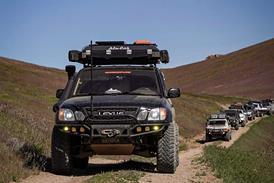

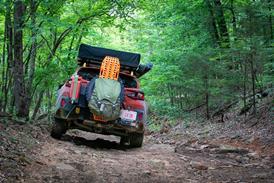
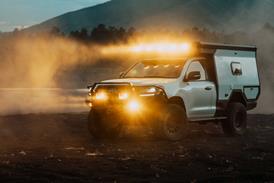
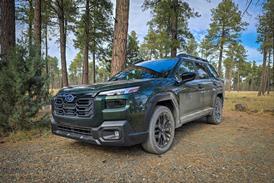
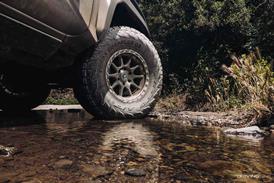

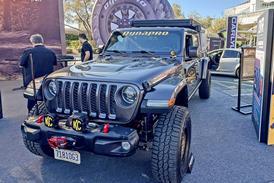
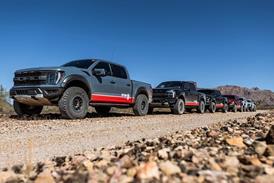
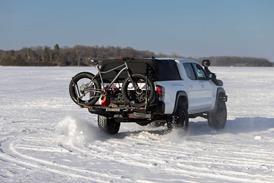


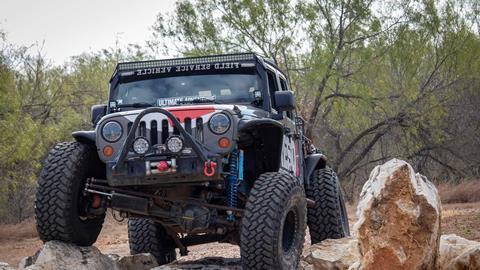






No comments yet